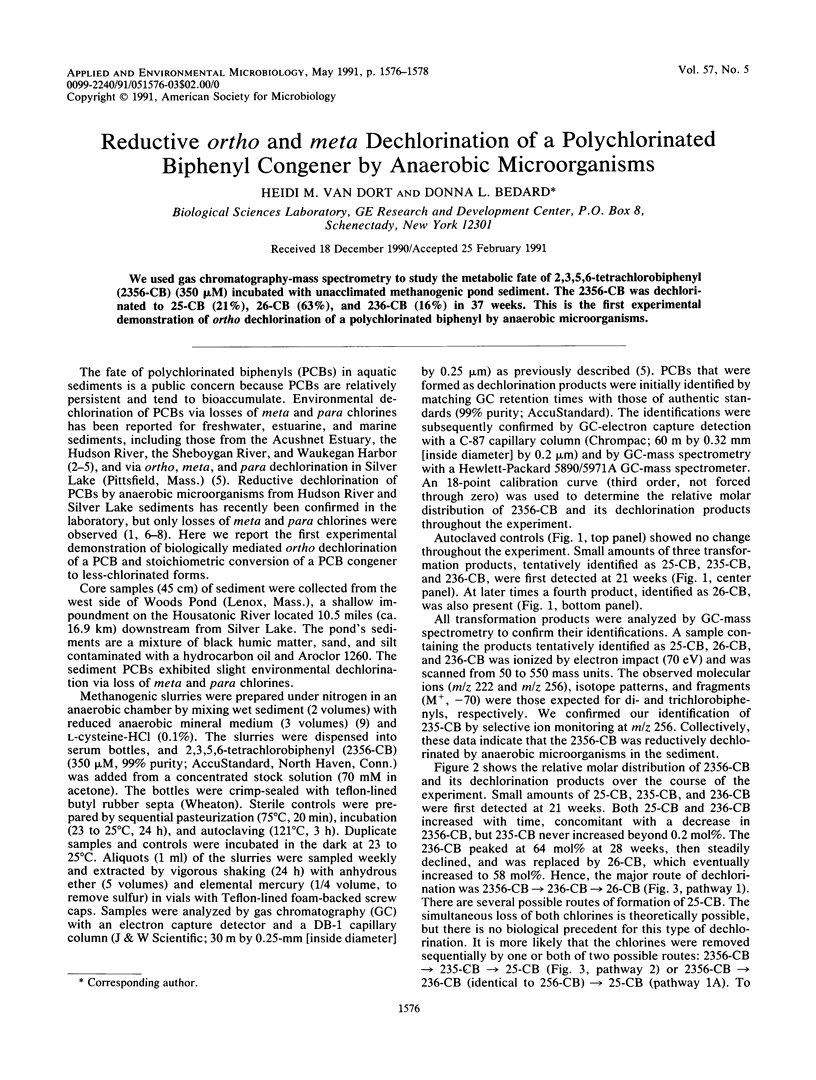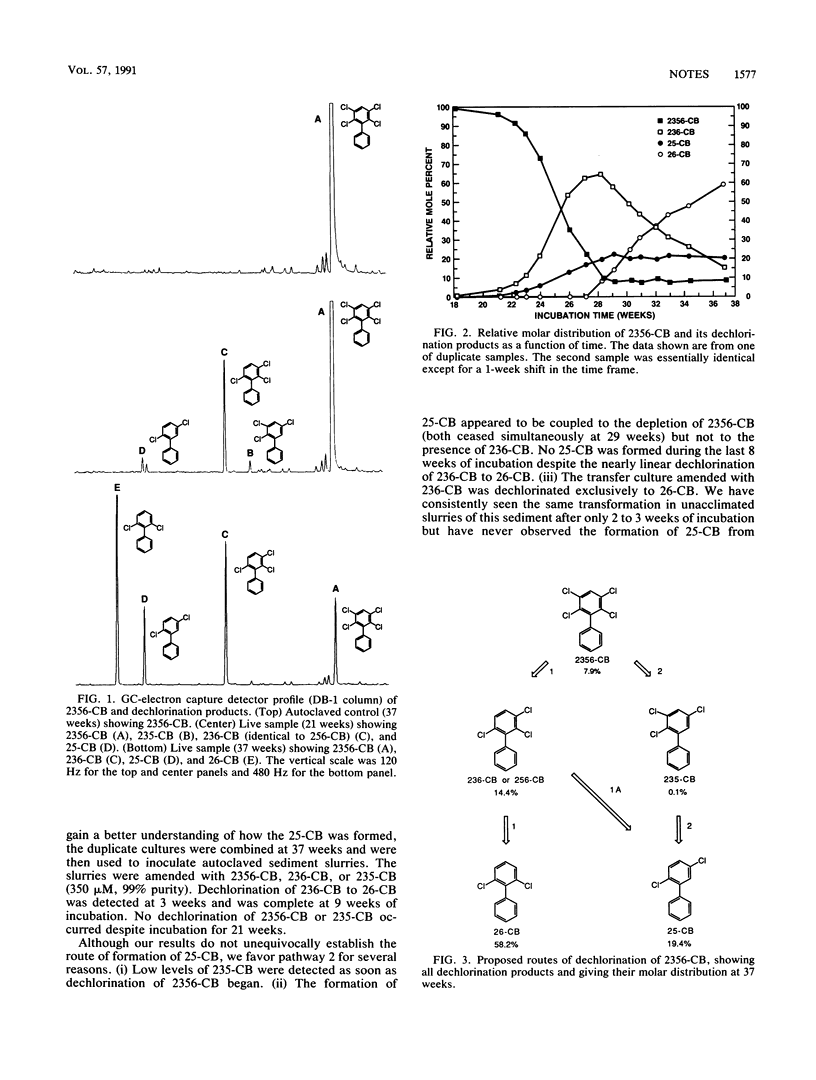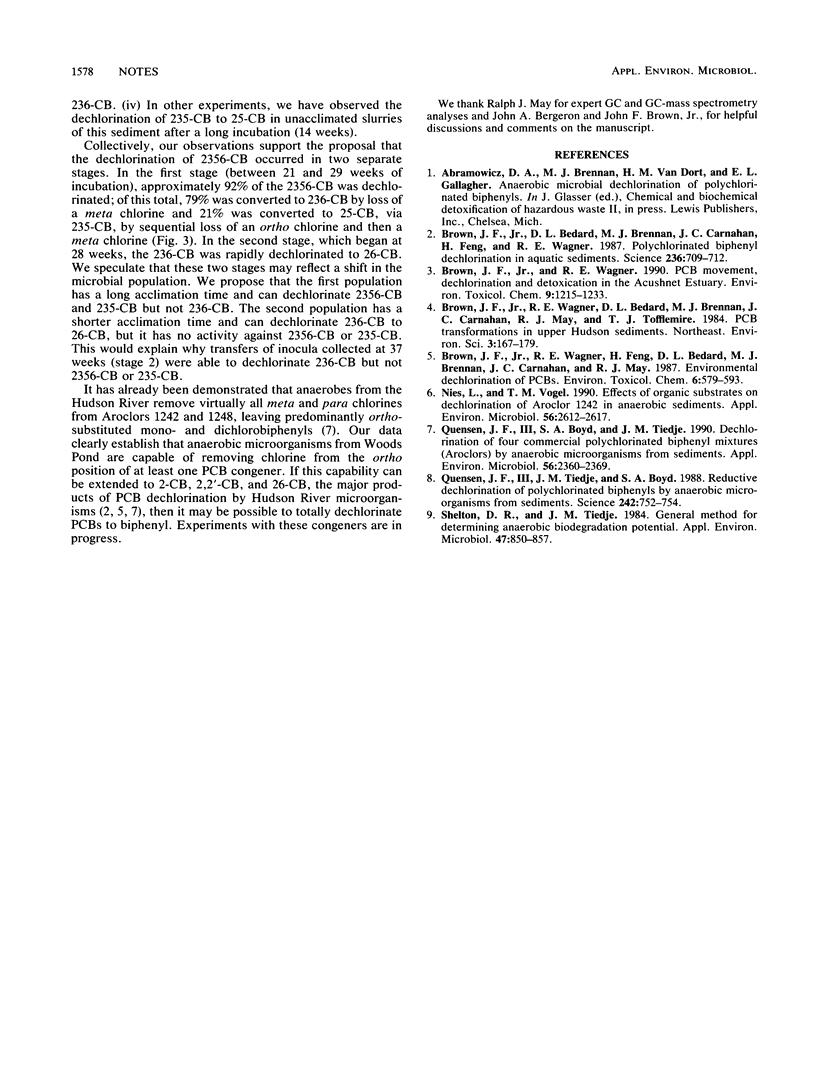Abstract
We used gas chromatography-mass spectrometry to study the metabolic fate of 2,3,5,6-tetrachlorobiphenyl (2356-CB) (350 μM) incubated with unacclimated methanogenic pond sediment. The 2356-CB was dechlorinated to 25-CB (21%), 26-CB (63%), and 236-CB (16%) in 37 weeks. This is the first experimental demonstration of ortho dechlorination of a polychlorinated biphenyl by anaerobic microorganisms.
Full text
PDF


Selected References
These references are in PubMed. This may not be the complete list of references from this article.
- Brown J. F., Jr, Bedard D. L., Brennan M. J., Carnahan J. C., Feng H., Wagner R. E. Polychlorinated biphenyl dechlorination in aquatic sediments. Science. 1987 May 8;236(4802):709–712. doi: 10.1126/science.236.4802.709. [DOI] [PubMed] [Google Scholar]
- Nies L., Vogel T. M. Effects of organic substrates on dechlorination of aroclor 1242 in anaerobic sediments. Appl Environ Microbiol. 1990 Sep;56(9):2612–2617. doi: 10.1128/aem.56.9.2612-2617.1990. [DOI] [PMC free article] [PubMed] [Google Scholar]
- Quensen J. F., 3rd, Tiedje J. M., Boyd S. A. Reductive dechlorination of polychlorinated biphenyls by anaerobic microorganisms from sediments. Science. 1988 Nov 4;242(4879):752–754. doi: 10.1126/science.242.4879.752. [DOI] [PubMed] [Google Scholar]
- Quensen John F., Boyd Stephen A., Tiedje James M. Dechlorination of Four Commercial Polychlorinated Biphenyl Mixtures (Aroclors) by Anaerobic Microorganisms from Sediments. Appl Environ Microbiol. 1990 Aug;56(8):2360–2369. doi: 10.1128/aem.56.8.2360-2369.1990. [DOI] [PMC free article] [PubMed] [Google Scholar]
- Shelton D. R., Tiedje J. M. General method for determining anaerobic biodegradation potential. Appl Environ Microbiol. 1984 Apr;47(4):850–857. doi: 10.1128/aem.47.4.850-857.1984. [DOI] [PMC free article] [PubMed] [Google Scholar]


